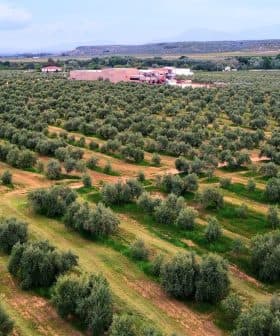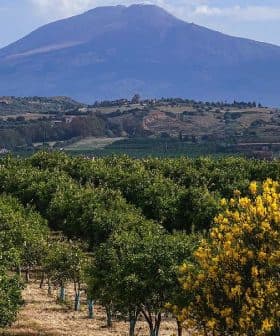Traditional Olive Oil Production in Tunisia
Tunisia, with just under 11 million inhabitants, is expected to be one of the top olive oil producers in the world this year, despite being smaller than California. Traditional methods are still widely used in the country, with farmers preferring old presses for higher yield, even though modernization could increase competitiveness in the future.
Tunisia counts just under 11 million inhabitants and is one-third smaller than California, but this year it is expected to be the third‑, or even second-largest producer of olive oil in the world. Despite its place in the international ranking, Tunisian producers are still strongly tied to old traditions.
In most of the country the harvest season starts in late November, when olives start to turn black, and groups of women and men go to the fields with big green nets and ladders to climb and collect the fruits of the majestic trees.
One person might collect, with the help of only a rod or a plastic comb, up to 150 kilos of olives per day. When the day is over, the olives are loaded in sacks over carts pulled by a donkey or in the backs of pickup trucks.
The number of continuous lines for olive oil production has increased, but in 2012, 1,050 mills out of 1,707 ma’asara are still using the traditional press, according to the International Olive Council.
Farmers or brokers present the mill owner with a basket with their name on it, filled with a sample of their olives. The mill buyer inspects the olives carefully, presses some of them by hand to verify the yield and, once he decides to buy, starts to negotiate the price.
In the mills working as contract extraction facilities, a common scene is long lines of pickups and sacks waiting their turn, and bored farmers smoking to pass the time. During a recent visit most farmers said they preferred to give their olives to mills with traditional systems because they believe that from old presses they will obtain a greater yield and a better oil. They seemed less concerned about hygienic standards or oxidation.

Hydraulic olive presses in a traditional Tunisian mill
The olives stay inside stalls, waiting their turn, like small, black mountains. When their time comes, the fruits enter the mill and are crushed by the stone to a paste that will be pressed into oil. The oil-water mixture exiting the press is separated by gravity.
The whole process is monitored by the ra’is, the director of the mill who coordinates the workers. At the end of the extraction and separation process, the oil is stored in underground basins in order to preserve its qualities.

In a good year these operations are repeated 24/7 from November to late April. Olive oil is the pride of Tunisia and constitutes a major source of work, ensuring somewhere between 30 and 45 million days of employment.
In time, a more modern and mechanized approach to the sector will increase the competitiveness of Tunisian olive oil, reducing the costs of the harvest and of the extraction process. This could be the challenge of the next generation of Tunisian olive oil producers.









